- By saammall
- August 5, 2025
- Skincare Knowledge
Many people mistakenly believe that sunscreen is just an optional step in skincare routine. In reality, this product plays a critical role in determining aging level, pigmentation, and overall skin health daily. Understanding this, SAAM will guide you on how to choose a good sunscreen for face comprehensively, while also clarifying common mistakes that prevent sunscreen from working as effectively as expected.
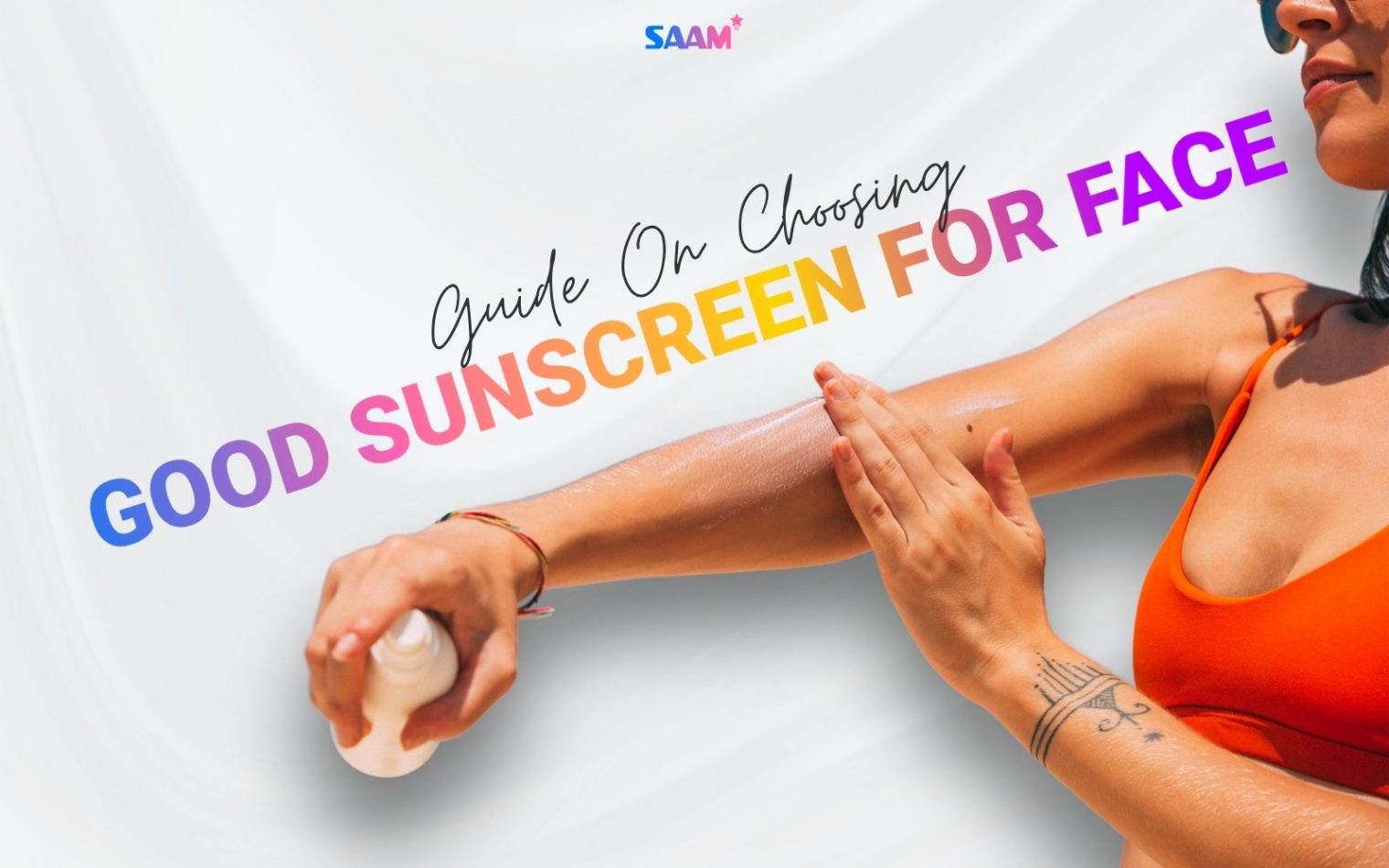
How to choose a good sunscreen for face comprehensively
1. Why Using a Good Sunscreen for Face Matters Every Day?
There are many conflicting opinions about whether sunscreen is essential. But do you know what happens to your skin without proper sun protection? Below are the most common negative effects:
- Accelerated skin aging: UVA rays penetrate deeply into the dermis, damaging the skin’s structural foundation, leading to early wrinkles, sagging, and loss of elasticity, even in young individuals.
- Increased pigmentation, melasma, and freckles: UVB rays can overstimulate melanocytes to produce excess melanin, causing dark spots and uneven skin tone. Some may experience pigment disorders resulting in serious discoloration.
- Damaged skin barrier: Sun exposure harms the lipid layer of the epidermis, causing dehydration, dryness, irritation, and inflammation. For skin under treatment, this can become even more problematic.
- Higher risk of skin cancer: Prolonged exposure to UV rays without protection can damage DNA in skin cells. According to medical statistics, this is the leading cause of basal cell carcinoma, squamous cell carcinoma, and melanoma, the most dangerous form of skin cancer.
- Reduced effectiveness of other skincare products: Without sunscreen, anti-aging, brightening, and recovery ingredients lose their effectiveness as skin continues to be damaged daily.
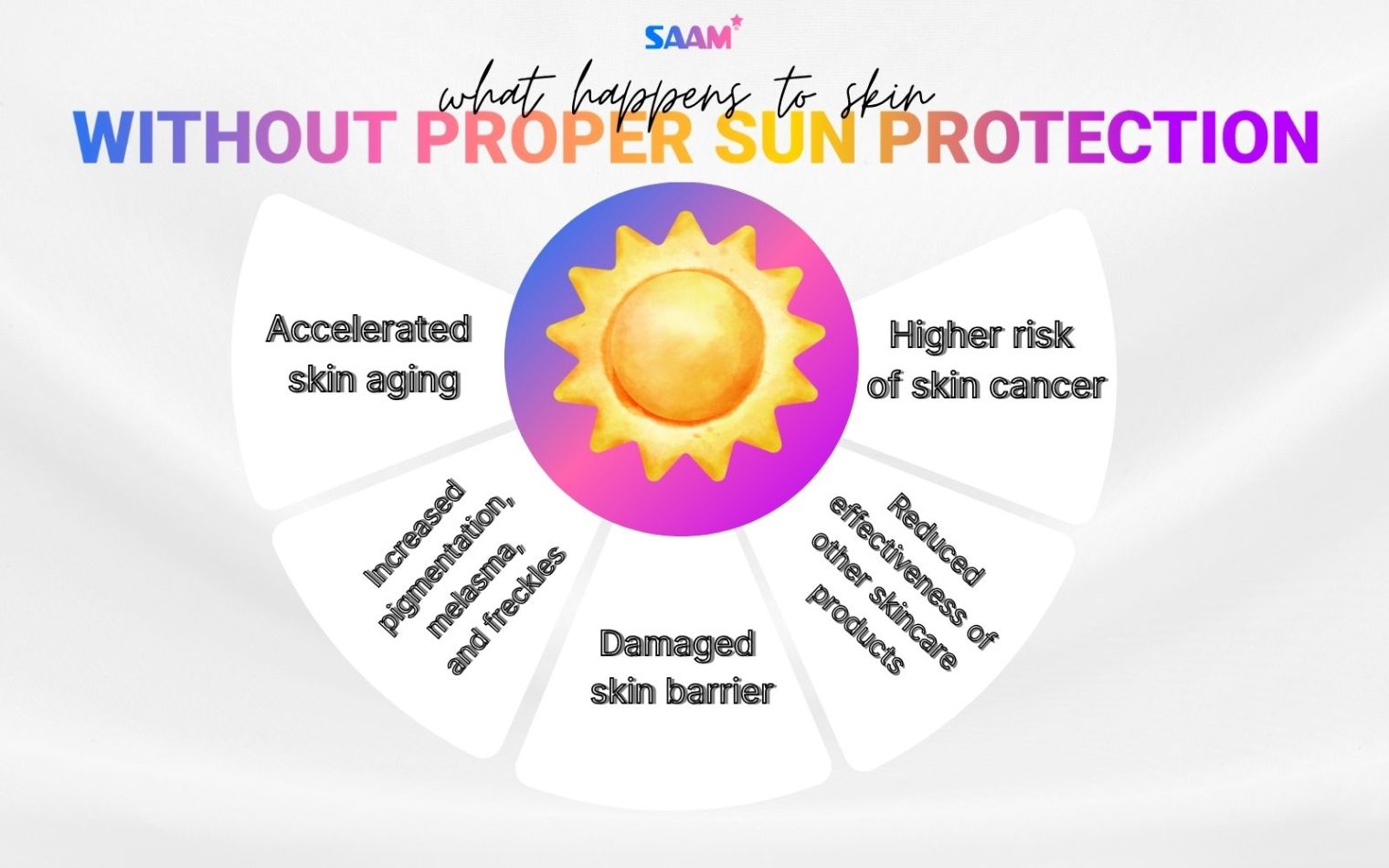
What happens to skin without proper sun protection?
In other words, all your skincare investments are useless without sun protection. Sunscreen is not just an extra step, it’s the foundation for healthy skin. That’s why choosing a good sunscreen for face is not only about beauty, but also about long-term skin health.
2. What Makes a Sunscreen “Good” for Your Face?
2.1. Essential criteria
Not all sunscreens are suitable for every skin type. A suitable sunscreen must have a high protective index and be compatible with your skin’s characteristics, lifestyle, and environment. Choosing the wrong one may result in clogged pores, breakouts, or chronic irritation. Here are in-depth criteria to consider:
- SPF (Sun Protection Factor): Measures protection against UVB. If you mostly work indoors, SPF 30 may suffice. However, in high UV environments like UAE or KSA, or with frequent outdoor activity, choose SPF 50 or above for optimal protection.
- PA (Protection Grade of UVA): Reflects UVA protection. PA++ is moderate, PA+++ is suitable for daily urban use, and PA++++ is ideal for sensitive or treated skin (e.g., melasma, post-peel), effectively preventing UVA-induced aging.
- Texture: For oily or acne-prone skin, choose gel or lotion forms that absorb quickly without clogging pores. Dry or sensitive skin benefits from creams or milky textures that provide more moisture and soothing effect.
- Type of sunscreen: Physical sunscreens are ideal for sensitive or healing skin. Chemical sunscreens offer lightweight textures and no white cast, great for normal to oily skin types.
In summary, a good sunscreen for face balances high protection, suitable texture, clean ingredients, and compatibility with your specific skin type. If you’re unsure, consult with SAAM’s team for personalized guidance.
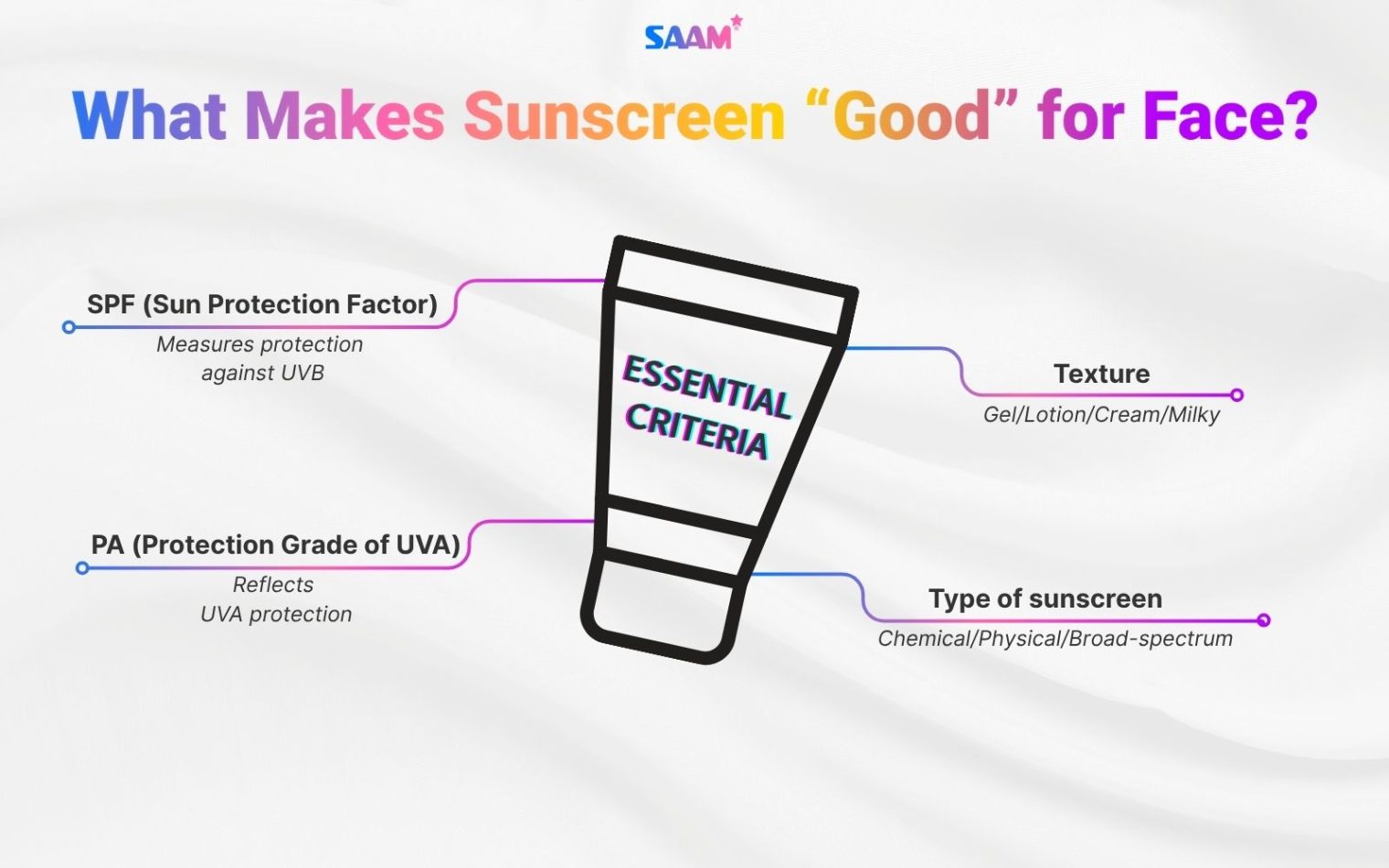
Four in-depth criteria to consider when choosing sunscreen good for face
2.2. Physical or Chemical Sunscreen?
If you’re new to skin care and sunscreen, you might be confused by the terms “physical” and “chemical” sunscreens. So what is the difference between them? Which sunscreen is the one you are looking for?
| Characteristics | Physical Sunscreen | Chemical Sunscreen |
| Main ingredients | Zinc Oxide, Titanium Dioxide | Avobenzone, Octinoxate, Tinosorb |
| Mechanism | Reflects UV rays | Absorbs and neutralizes UV rays |
| Advantages | Gentle, less irritating | Lightweight, blends into skin well |
| Disadvantages | May leave a white cast | May sting sensitive skin |
Comparison between physical sunscreen and chemical one
In fact, there are now sunscreens that combine advantages of both types. Ideally, choose a broad-spectrum type that has both physical and chemical ingredients for optimal protection. At the same time, based on skin properties, choosing on good sunscreen for face is extremely simple.
3. Common Sunscreen Ingredients
To choose a good sunscreen for face, SPF and PA index are not enough. Active ingredients are also an important factor to consider. Understanding each ingredient will help you make the right choice for your skin protection and recovery needs, especially for those treating melasma, weak skin, or acne.
- Zinc Oxide & Titanium Dioxide: Physical blockers that reflect both UVA and UVB. Gentle and stable ideal for sensitive, healing, or post-procedure skin.
- Avobenzone & Uvinul A Plus: Chemical filters that target deep-penetrating UVA1. Avobenzone converts harmful rays into heat, while Uvinul A Plus remains stable in strong sun and prevents DNA damage and pigmentation.
- Niacinamide (Vitamin B3): Brightens, reduces inflammation, regulates oil, and strengthens skin barrier. Especially beneficial for acne-prone or sensitized skin.
- Vitamin E & Vitamin C: Potent antioxidants that neutralize free radicals caused by UV exposure. Vitamin C promotes collagen production and brightens, while Vitamin E boosts hydration and cell repair.
Choosing the best sunscreen for your skin type shouldn’t be based solely on how it feels on your skin. Look closely at active ingredients to make sure the product not only blocks UV rays but also improves your current skin condition.
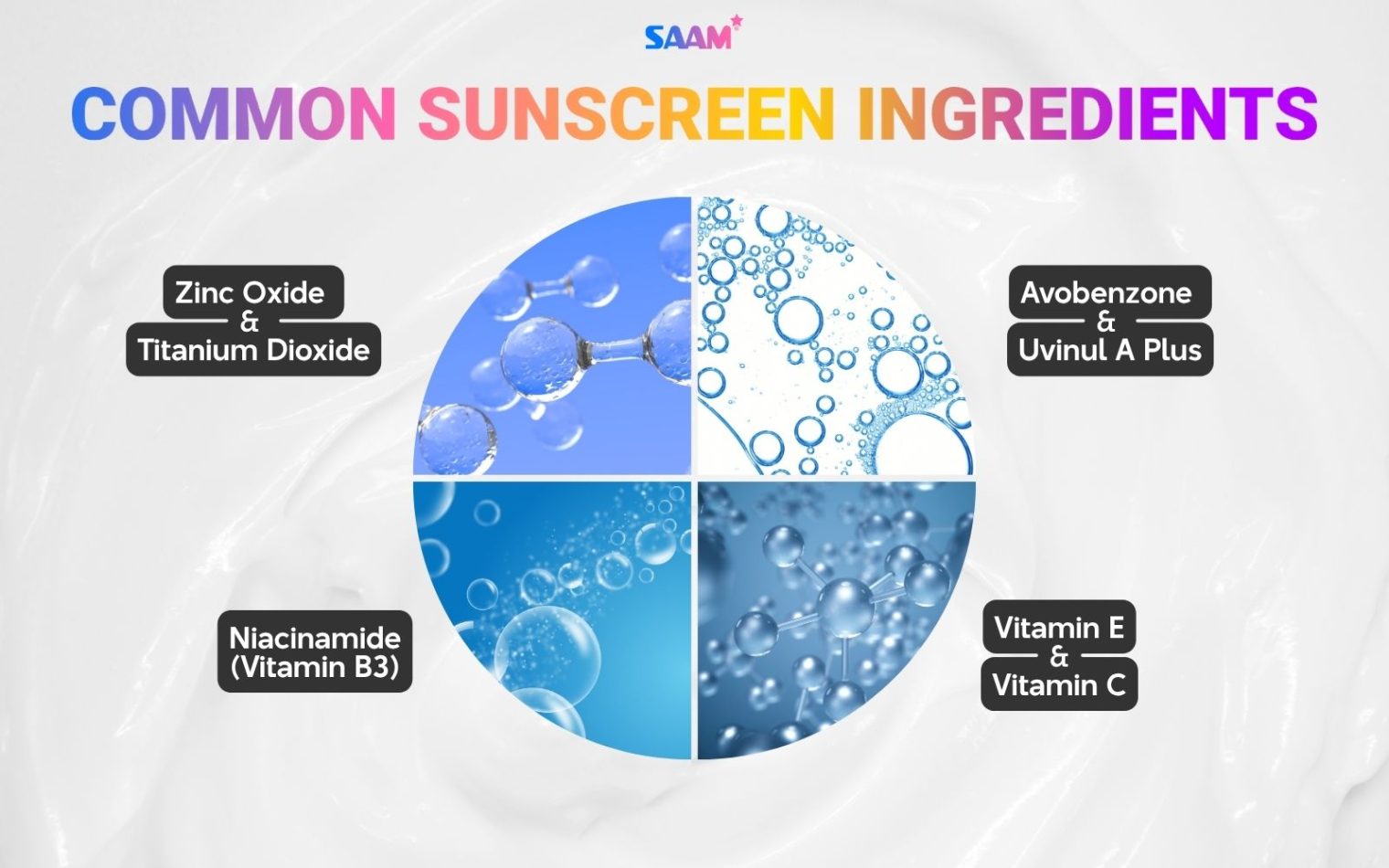
Common sunscreen ingredients
4. How To Apply Sunscreen Properly?
4.1. Proper Application Technique
If you have chosen good sunscreen for face, then using it correctly is the next thing you need to know. Applying wrong or not reapplying for enough time or skipping additional steps will significantly reduce sun protection ability.
- Use a coin-sized amount: This is the standard amount to create a thick and even protective layer on skin surface. If you use too little, even if sunscreen has a high SPF, it will not achieve the expected protection effect.
- Apply 15–20 minutes before sun exposure: Sunscreen needs time to absorb evenly and stably to skin, especially chemical lines. Applying too close to going out will not allow product to work effectively.
- Reapply every 4 hours if outdoors: Because sweat, oil, dirt and even wiping your face during day will wear down sunscreen. Therefore, reapplying is mandatory if you are outdoors, especially after swimming or strenuous exercise.
Good sunscreen for face is only part of a comprehensive “defense strategy”. Use physical shields such as hats, glasses, masks to reduce direct UV exposure and support sunscreen protection. This is an especially important factor for people who are treating melasma, laser or skin peeling.
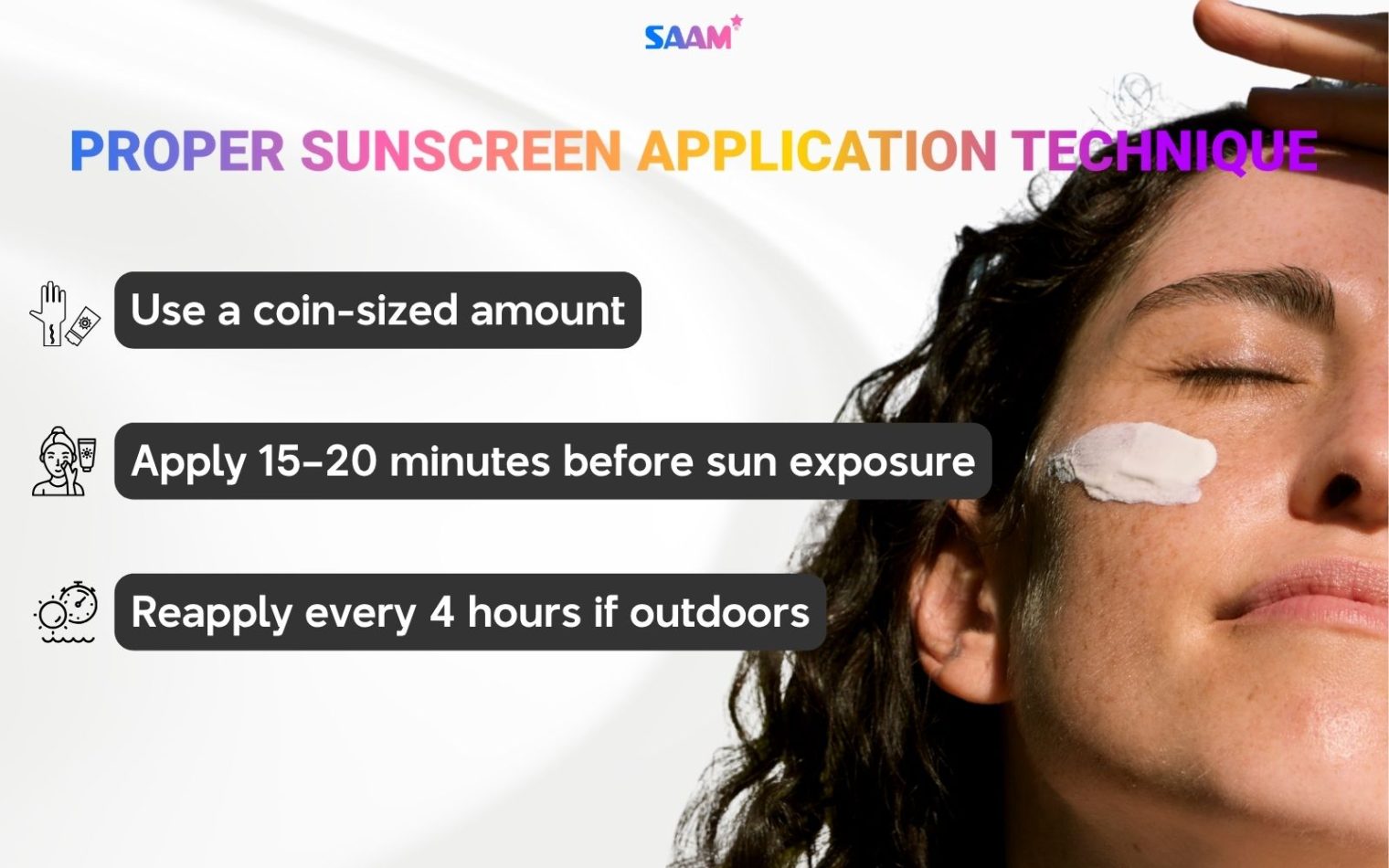
Proper sunscreen application technique
4.2. Common Mistakes to Avoid
To best protect your skin, pay special attention to the following common mistakes!
- Skip sunscreen because think that SPF in makeup products is enough. In fact, the amount of foundation or cushion you use is very small, unable to reach standard layer of film like a specialized sunscreen. Moreover, makeup products often fade quickly and are unstable in sun.
- Do not use sunscreen on rainy, cloudy days or indoors. However, UVA can still penetrate clouds, glass doors, and curtains, and even work almost unchanged all year round. If you sit near a window, work in a room with natural light, or use many electronic devices, you still need to protect your skin with sunscreen.
- Do not cleanse your skin thoroughly daily, even if you only use sunscreen. However, if you double cleanse with oil or makeup remover, it is still necessary. Sunscreen is often sticky and waterproof, so regular face washing is not enough to completely remove it. The long-term accumulation of residue can cause clogged pores, acne, or inflammation of the pores.
Applying sunscreen properly requires technique, knowledge and perseverance. Consider using sunscreen as an investment in long-term skin health protection, not just temporary sun protection. By applying right steps and avoiding common mistakes, you will build a solid barrier to protect your skin from UV rays and premature aging signs.
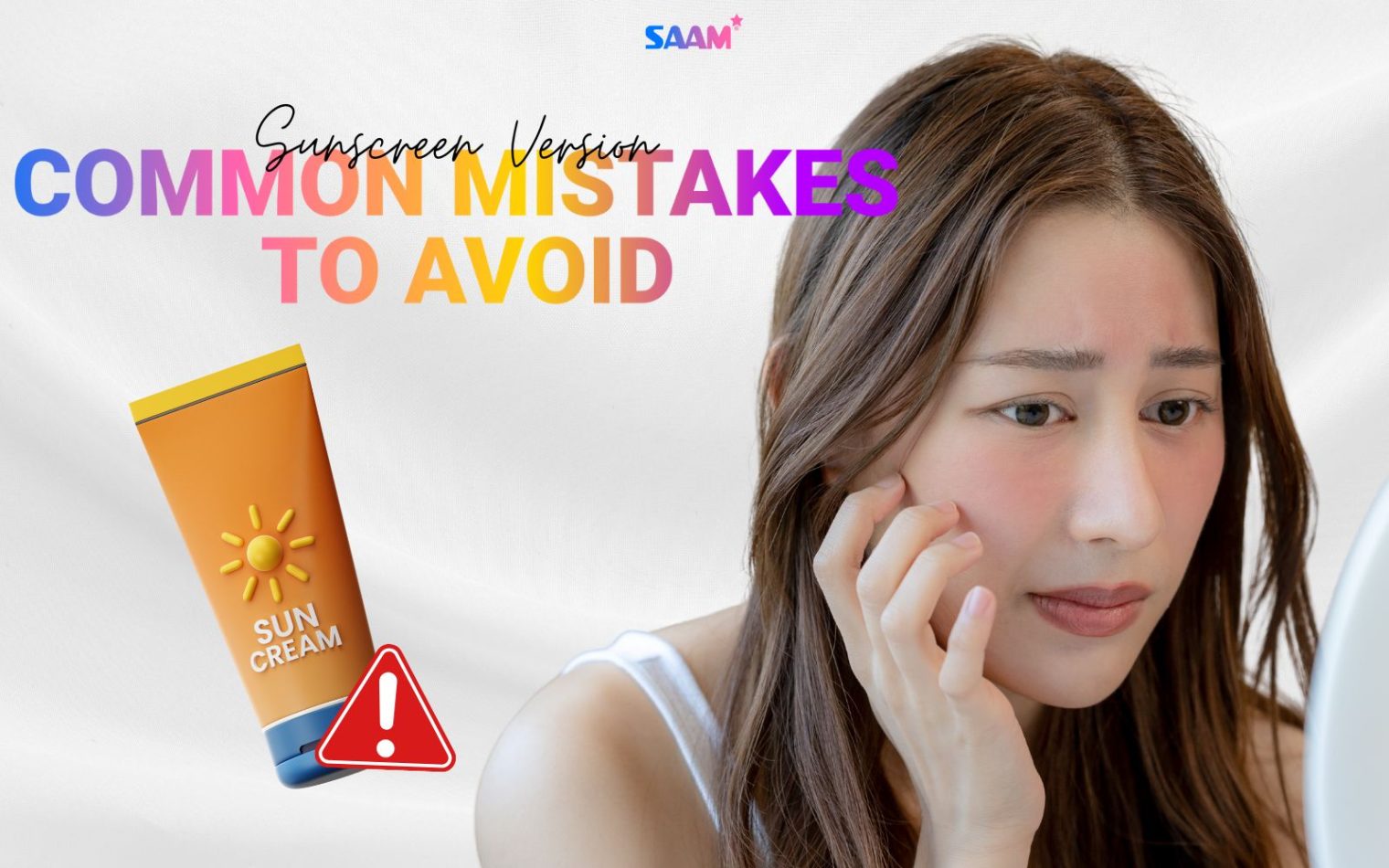
Common mistakes to avoid when using sunscreen
5. Recommend Good Sunscreen For Face – SAAM Perfect UV Sunscreen
As a brand specializing in skin treatment and restoration, SAAM has developed Perfect UV Sunscreen with SPF 60, PA++++, offering ultimate protection from both UVA and UVB, even under the intense sun in Middle East or Africa.
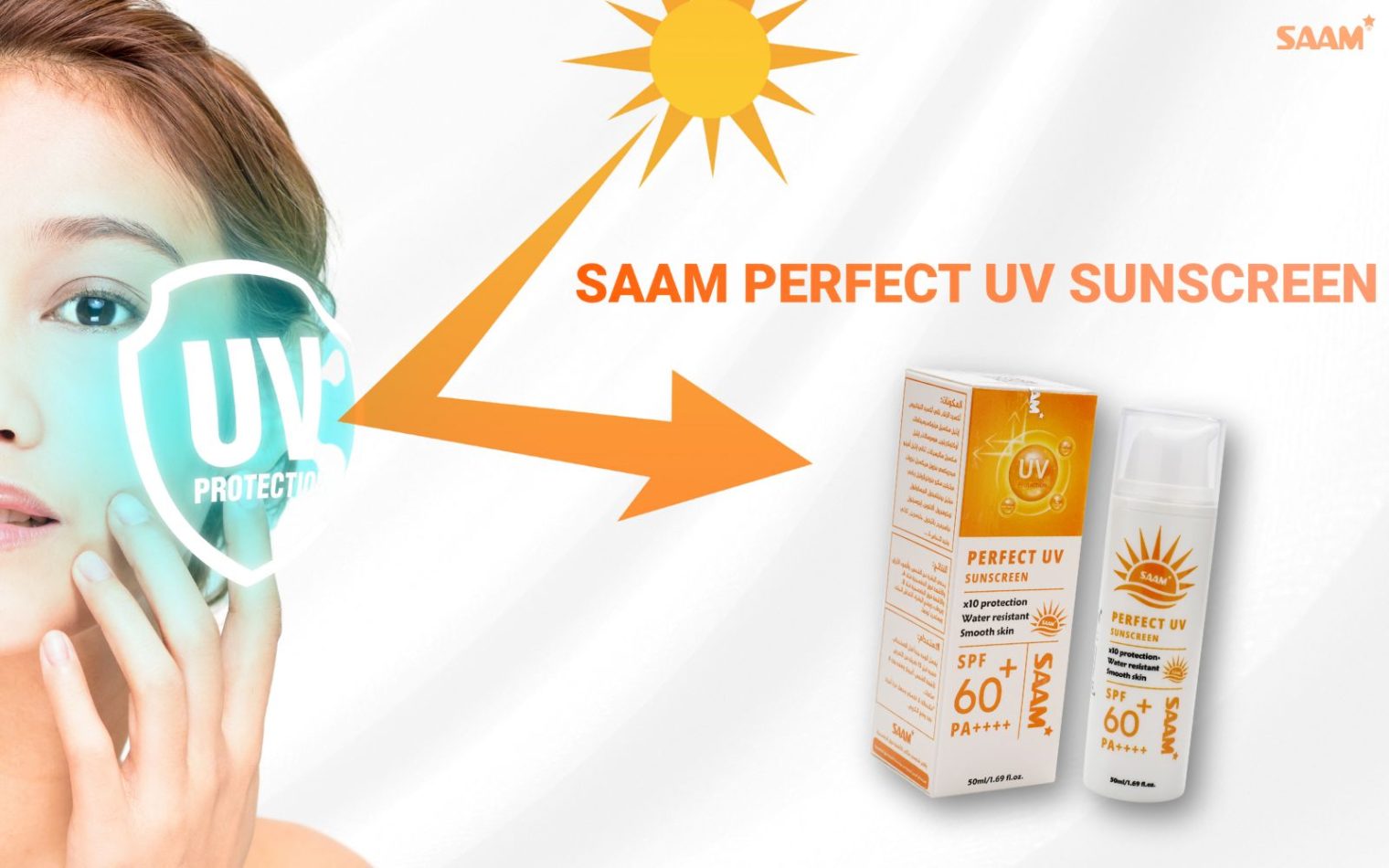
SAAM Perfect UV Sunscreen is an optimal choice for your facial skin
Its lightweight, breathable texture glides on easily without clogging pores and suits all skin types, including those undergoing treatment. In addition to strong sun defense, the formula includes Niacinamide, Vitamin E, and Glycerin to brighten, restore skin barrier, and provide antioxidant support throughout day. If you’re looking for a safe and good sunscreen for face, SAAM’s product is a trustworthy choice for everyday use.
